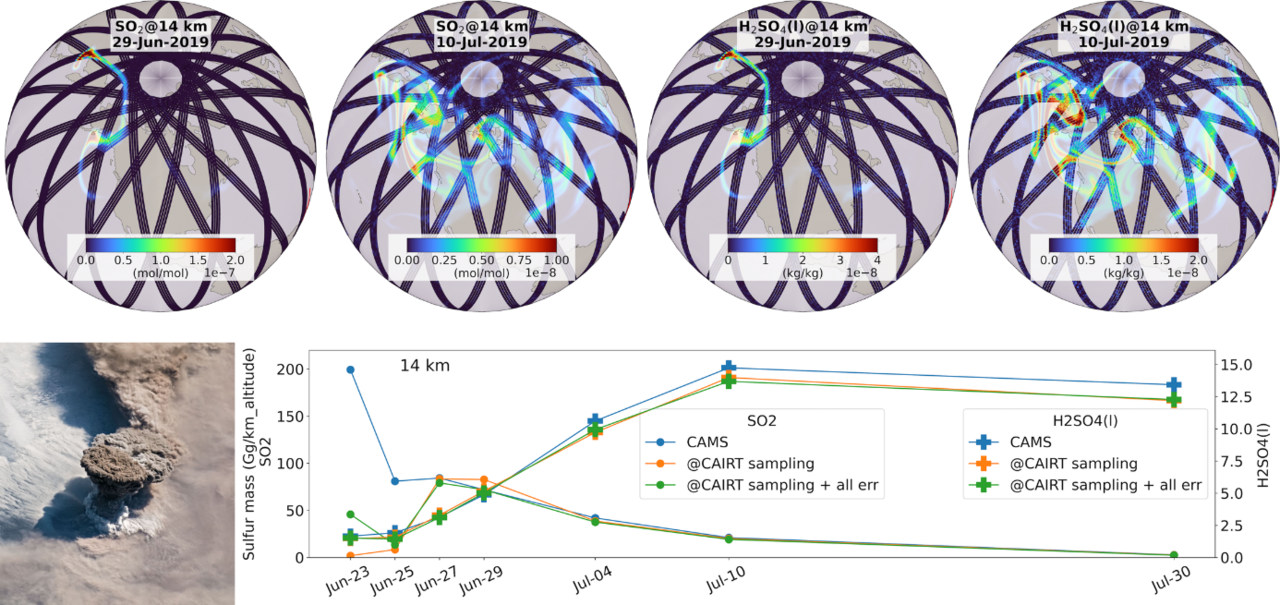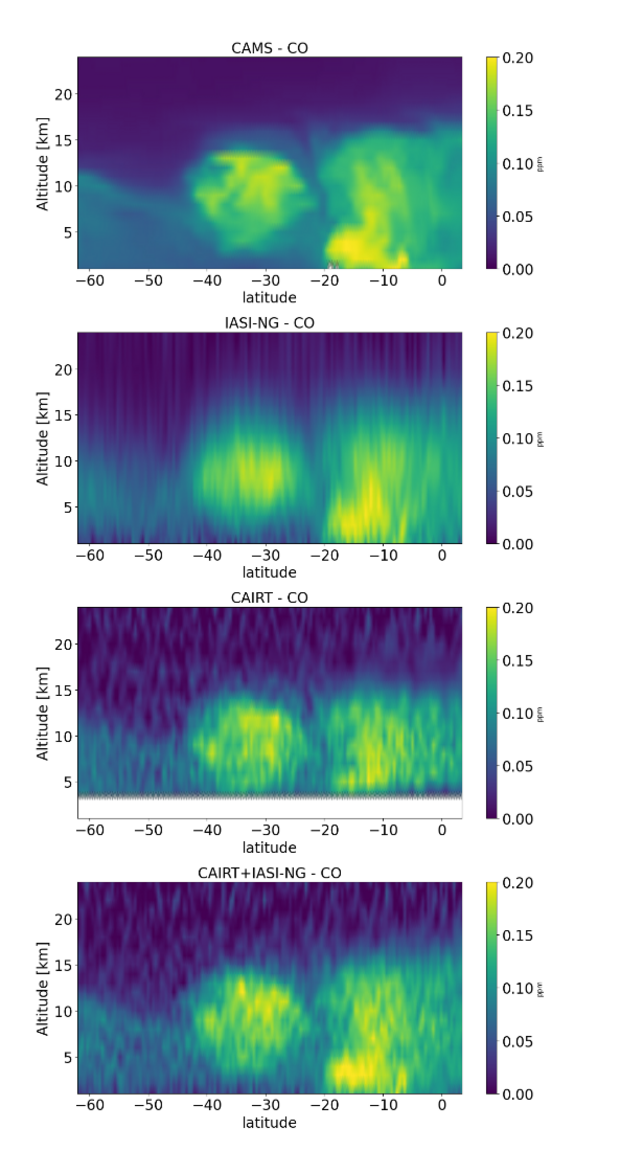Aerosol Composition and Precursor Gases
Aerosols in the stratosphere and upper troposphere from volcanic eruptions or biomass burning are important forcers of climate change and a major source of uncertainty in climate predictions.
©NASA
The major factor controlling stratospheric aerosol variability are volcanic eruptions injecting sulfur directly into the lower stratosphere. Despite large eruptions, episodic and short-lived moderate volcanic eruptions increase the stratospheric aerosol loading thereby affecting climate. In addition, due to their efficiency at cooling the planet, artificial enhancement of stratospheric sulfate aerosols has been proposed as a method of solar radiation management (i.e. ‘geoengineering’) to counteract climate change. Such action, should it take place, will require close monitoring and careful understanding of the fate of stratospheric aerosols.
Wildfires can cause stratospheric perturbations approaching the effect of moderate volcanic eruptions. As the frequency and intensity of the wildfires is expected to increase in the changing climate, they may become a significant contributor to the composition of the Upper Troposphere and Lower Stratosphere (UTLS) in the future.
Case study of the Raikoke eruption in June 2019

In the top row, simulated CAIRT observations of SO2 and H2SO4-aerosols on June 29th and July 10th are shown overlaid over the global CAMS dataset at 14 km. In the bottom row, the time-series of the global stratospheric SO2/H2SO4 budgets at 14 km altitude after the eruption, as modelled by CAMS compared to simulated CAIRT observations are shown. This demonstrates that shortly after the eruption it will be possible to derive the altitude-resolved stratospheric sulfur budget from CAIRT observations
CAIRT and IASI-NG

Furthermore, the exploitation of the combination between CAIRT and IASI-NG (onboard MetOp-SG satellite which CAIRT will fly in formation with) will allow observation of the transport of plumes of pollutants from the surface (where they are emitted) up to the stratosphere. An example is shown for two plumes of CO emitted from biomass burning: the CAMS model data sampled at the CAIRT retrieval grid is shown as well as the simulated IASI-NG retrievals, the simulated CAIRT retrievals and their combination. IASI-NG is sensitive to the lower layers of the atmosphere but fails to resolve the altitude of the plume in the UTLS, CAIRT is not able to sound the lower layers of the atmosphere while can accurately resolve the plume in altitude. The combined product provides altitude resolved profiles from the surface to the stratosphere.

